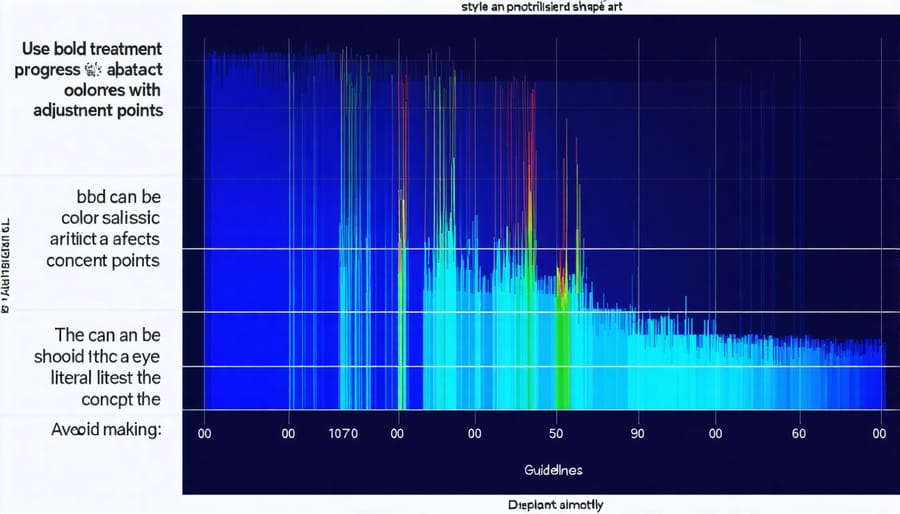When your child receives a mental health diagnosis, understanding the steps after diagnosis becomes crucial for their wellbeing and your peace of mind. Differential diagnosis, a systematic method healthcare providers use to identify the most accurate condition, involves six critical steps that ensure your child receives the right care and support.
Think of differential diagnosis as putting together a complex puzzle – each piece represents valuable information about your child’s symptoms, behaviors, and experiences. This methodical approach helps distinguish between similar-looking conditions, preventing misdiagnosis and ensuring targeted, effective treatment strategies.
For parents and caregivers, understanding this process empowers you to actively participate in your child’s healthcare journey. Whether you’re dealing with behavioral challenges, emotional difficulties, or developmental concerns, knowing how professionals arrive at a diagnosis helps you ask the right questions and make informed decisions about your child’s care.
Let’s explore these six essential steps that healthcare providers use to carefully evaluate and accurately diagnose mental health conditions in children, ensuring they receive the most appropriate and effective support for their unique needs.

Step 1: Gathering Additional Information
School and Teacher Reports
School reports and teacher observations provide invaluable insights into a child’s daily functioning and potential challenges. Teachers spend significant time with students and can offer detailed classroom behavior assessments that help identify patterns and triggers.
When gathering educational information, request both academic progress reports and behavioral observations. Look for details about:
– Social interactions with peers
– Attention and focus during different activities
– Response to various teaching methods
– Emotional regulation in different settings
– Academic performance across subjects
Ask teachers to provide specific examples and document when certain behaviors occur. Many schools use standardized forms or rating scales to track student progress. These structured assessments can help identify areas where a child might need additional support or accommodations.
Remember that behavior can vary between different environments, so it’s helpful to gather input from multiple teachers and staff members who interact with your child. This comprehensive view helps create a more accurate picture of your child’s needs and strengths.
Family History and Home Environment
Understanding a patient’s family history and home environment is crucial in making an accurate diagnosis. Medical conditions, mental health disorders, and behavioral patterns often run in families, making genetic factors an important consideration. For example, if a child’s parent has been diagnosed with anxiety, the child may have a higher predisposition to developing similar symptoms.
The home environment plays an equally significant role. Factors such as family dynamics, living conditions, daily routines, and exposure to stress can significantly impact a person’s mental and physical health. Dr. Sarah Chen, a child psychiatrist, explains, “What happens at home shapes how children develop and cope with challenges. Sometimes, what appears as symptoms might actually be responses to environmental stressors.”
Healthcare providers will typically gather information about family relationships, recent life changes, trauma history, and support systems. They may ask about parenting styles, household rules, and daily schedules. This comprehensive understanding helps distinguish between genetic predispositions, environmental influences, and their potential interactions, leading to more accurate diagnoses and effective treatment plans.
Step 2: Ruling Out Physical Conditions
Before considering any mental health diagnosis, it’s crucial to rule out physical conditions that might be causing or contributing to the symptoms. Many physical health issues can present with symptoms that mirror mental health concerns, which is why a thorough medical evaluation is an essential early step in the diagnostic process.
Dr. Sarah Johnson, a pediatrician with over 20 years of experience, explains, “I’ve seen cases where thyroid problems were mistaken for depression, or where sleep apnea was causing attention difficulties similar to ADHD. That’s why we always start with a complete physical examination.”
During this step, healthcare providers typically:
– Conduct a comprehensive physical examination
– Review medical history and current medications
– Order relevant blood tests and lab work
– Check hormone levels and thyroid function
– Evaluate sleep patterns and quality
– Assess nutrition and dietary factors
– Consider any recent illnesses or injuries
For example, when 12-year-old Marcus showed signs of anxiety and difficulty concentrating, his doctor discovered he had an underlying vitamin B12 deficiency. After addressing this physical condition, many of his symptoms improved significantly.
Common physical conditions that can affect mental health include:
– Thyroid disorders
– Nutritional deficiencies
– Sleep disorders
– Autoimmune conditions
– Hormonal imbalances
– Chronic pain or illness
Only after ruling out physical causes can healthcare providers move forward with confidence in exploring potential mental health diagnoses. This thorough approach ensures that treatment plans address the root cause of symptoms rather than just managing their outward manifestation.
Step 3: Considering Co-existing Conditions
When evaluating a child’s mental health, it’s crucial to understand that conditions often don’t occur in isolation. Many children experience multiple conditions simultaneously, known as co-existing or comorbid conditions. For instance, a child with ADHD might also show signs of anxiety or depression.
Dr. Sarah Martinez, a child psychiatrist with 15 years of experience, explains, “Think of it like layers of an onion. Sometimes we need to peel back one layer to better understand what’s underneath. A child’s difficulty focusing might be linked to anxiety about school performance, not just ADHD.”
Understanding these interconnections helps create more effective treatment plans. For example, treating anxiety in a child with both ADHD and anxiety might improve their ability to focus and complete tasks. Similarly, addressing sleep issues might help reduce symptoms of both depression and attention difficulties.
Parents often notice this interplay in everyday situations. Maria, mother of 8-year-old Alex, shares, “We initially thought Alex just had anxiety, but working with our healthcare team helped us realize that his perfectionism was also tied to undiagnosed ADHD. Understanding both conditions helped us find better ways to support him.”
Healthcare providers consider these co-existing conditions when:
– Developing treatment strategies
– Selecting appropriate medications
– Planning behavioral interventions
– Setting realistic treatment goals
– Monitoring progress over time
Remember that having multiple conditions doesn’t mean the situation is more severe or less treatable. Instead, recognizing co-existing conditions helps create a more comprehensive and effective treatment approach tailored to your child’s unique needs.

Step 4: Developing a Treatment Plan
Therapeutic Approaches
Once a differential diagnosis has been established, healthcare providers can explore various treatment options for children based on their specific needs. Common therapeutic approaches include cognitive behavioral therapy (CBT), which helps children understand and manage their thoughts and behaviors, and play therapy, which allows younger children to express themselves naturally through play.
Family therapy often plays a crucial role, involving parents and siblings in the healing process. This approach helps create a supportive home environment and teaches family members how to better understand and respond to their child’s needs. Some children may benefit from medication, particularly when combined with other therapeutic approaches.
Group therapy can be valuable for children who need peer support and social skill development. Art therapy and music therapy offer creative outlets for expression, especially helpful for children who struggle with verbal communication. The key is finding the right combination of treatments that works best for your child’s unique situation, always keeping in mind that treatment plans may need adjustment as your child grows and their needs change.
Support Systems
Creating a strong support network is crucial for both the child and family during the diagnostic process. Start by identifying key people who can provide emotional and practical assistance, including family members, close friends, and trusted neighbors. These individuals can offer respite care, help with daily tasks, or simply lend a listening ear when needed.
At school, work closely with teachers, counselors, and administrators to ensure your child receives appropriate accommodations and understanding. Many schools have resource specialists who can help develop educational plans tailored to your child’s needs. Regular communication between home and school creates a consistent, supportive environment.
In the community, connect with support groups where families facing similar challenges share experiences and resources. Local mental health organizations often provide valuable workshops, counseling services, and referrals to specialists. Consider joining online communities for additional support and information sharing.
Remember to include your child’s healthcare providers in this network. Regular check-ins with pediatricians, therapists, and specialists help maintain coordinated care and ensure everyone works together toward your child’s well-being.
Step 5: Monitoring Progress
After implementing mental health treatment strategies, it’s crucial to track your child’s progress carefully. Think of monitoring like taking regular photographs of a growing plant – you want to capture both small changes and significant developments over time.
Keep a daily journal noting behavioral changes, mood patterns, and any side effects from medications or therapies. This information becomes invaluable during follow-up appointments with healthcare providers. Remember to celebrate small victories – even minor improvements are steps in the right direction.
Regular check-ins with your child’s treatment team are essential. These meetings help evaluate the effectiveness of current interventions and allow for timely adjustments when needed. Don’t hesitate to speak up if you notice something isn’t working as expected – your observations as a parent are incredibly valuable to the diagnostic process.
Consider using rating scales or behavioral charts recommended by your healthcare provider to track progress objectively. These tools can help identify patterns that might not be obvious in day-to-day observations. Remember that progress isn’t always linear – there might be setbacks along the way, and that’s completely normal.
Stay connected with your child’s school and other caregivers to gather comprehensive feedback about their progress in different environments. This collaborative approach ensures you’re getting a complete picture of how the treatment plan is working across all aspects of your child’s life.

Step 6: Regular Review and Adjustment
A differential diagnosis isn’t set in stone – it’s a living document that should evolve with your child’s journey. Regular review of the diagnosis and treatment plan is essential to ensure your child receives the most effective care possible.
Dr. Sarah Chen, a child psychiatrist, explains: “Children grow and change rapidly. What works today might need adjustment in six months. That’s why we schedule regular check-ins with families to assess progress and make necessary changes.”
During these review sessions, your healthcare provider will:
– Evaluate how well current treatments are working
– Listen to your observations about changes in your child’s behavior
– Note any new symptoms or concerns
– Assess side effects of medications (if applicable)
– Consider whether adjustments are needed
Remember to keep a journal of your observations between appointments. Note both improvements and challenges – this information is invaluable for your healthcare team. Don’t hesitate to request an earlier review if you notice significant changes or have pressing concerns.
As one parent shared: “Initially, I worried about questioning our doctor about the diagnosis. But when I noticed new behaviors and spoke up, we discovered that some adjustments to the treatment plan made a huge difference for my daughter.”
Being flexible and open to adjustments is key to successful long-term management. Your active participation in this ongoing process helps ensure your child receives the most appropriate and effective care as they grow and develop.
Remember that reaching a clear diagnosis is a journey that requires patience, understanding, and collaboration. While the six-step process of differential diagnosis provides a structured approach, every child’s path is unique, and it’s perfectly normal for this journey to take time.
As a parent or caregiver, you play a vital role in this process. Your observations, insights, and dedication to understanding your child’s needs are invaluable to healthcare professionals working to provide the most accurate diagnosis and effective treatment plan.
Take comfort in knowing that you’re not alone in this journey. Many families have walked this path before, and there are numerous support systems available – from healthcare professionals and school counselors to support groups and community resources. These networks can provide both practical guidance and emotional support when you need it most.
Stay hopeful and maintain open communication with your child’s healthcare team. Sometimes, initial diagnoses may need adjustment as new information comes to light or as your child develops. This is a normal part of the process and shows that the healthcare team is being thorough and attentive to your child’s changing needs.
Remember, the goal of differential diagnosis isn’t just to put a label on your child’s challenges – it’s to understand them better and create the most effective path forward for their well-being and success.







